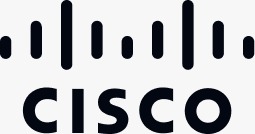
CCNP Enterprise Core (ENCOR)
- Course Fee
- ₹25000
- Duration
- 120 hrs.
- Level
- intermediate
This course is designed for anyone seeking CCNP Enterprise- ENCOR and ENARSI certification and gives in-depth knowledge for personnel involved in deploying, troubleshooting, and managing enterprise and service providers wired and wireless networks. You'll also learn to implement security principles, to implement automation and programmability within an enterprise network, and how to overlay network design by using SD-Access and SD-WAN solutions. This course covers a breadth of topics like creating HLD and LLD for L2 and L3 campus network, enterprise WAN, Service Provider and ISP network, entire layer 2 technology suite, advanced L3 technologies like BGP, OSPF, MPLS-VPN, MPLS-TE, Multicasting, QoS, IP services, Security fundamentals, Wireless, Automation and programmability. The CCNP ENCOR is a lab-intensive course with 80+ Labs and objectives are accomplished mainly through hands on learning. This CCNP ENCOR customized course also extensively covers all topics of ENARSI course.
Enroll NowCourse Metadata
- Training Type
- ClassroomOnlineCorporate
- Batch Timings
- Early Morning
- Morning
- Afternoon
- Evening
- Fastrack
- Morning
- Afternoon
- Evening
- Sat / Sun
- Sunday Only
For the latest training schedule, please
check the Schedules.
Weekdays
Weekends
Training is available in small groups as well as on
one-to-one basis. Get in touch.
Introduction
This 120hrs (Lectures + hands-on Lab) CCNP-ENCOR training is designed for personnel involved in deploying, troubleshooting, and managing enterprise and service providers wired and wireless networks. Candidates will also learn to implement security principles, automation, and programmability within an enterprise network, and how to overlay network design by using SD-Access and SD-WAN solutions. This course covers a breadth of topics like creating HLD and LLD for L2 and L3 campus network, enterprise WAN, Service Provider and ISP network, entire layer 2 technology suite, advanced L3 technologies like BGP, OSPF, MPLS-VPN, MPLS-TE, Multicasting, QoS, IP services, Security fundamentals, Wireless, Automation and programmability. The CCNP ENCOR is a lab-intensive course with 80+ Labs and objectives are accomplished mainly through hands on learning. This CCNP ENCOR customized course also extensively covers all topics of ENARSI course.
The key to a high success rate is based on the program’s objectives as follows:
- Course contents are based on CCNP Enterprise- ENCOR and ENARSI course outlines.
- Dedicated Monitoring to evaluate and report candidate’s progress.
- Extensive hands-on lab exercises.
- Industry acclaimed, experienced and certified instructors.
Successsful Career
RST Forum has trained more than 700,000 students to date. Many students have gone on to successful careers in a variety of industries, while others have harnessed the entrepreneurial spirit and knowledge they acquired in RST Forum to start their own businesses and create new jobs.
Labs on cloud
RST Forum uses Cloud computing to efficiently provide “Platform As A Service” (PAAS) to its students enabling them to quickly access Technology Racks over the internet and practice lab exercise from home These Racks are populated with latest equipment’s required for practical exercise’s.
Web Forums
Our web based forum allows its users to ask, hundreds of technical experts about their technology and certification problem. RST forum is a tight knit community of working professionals that provide timely help on technical, certification and design related queries.
Enroll for this course now and boost your IT & Engineering career.
Master CCNP Enterprise Core (ENCOR) today.